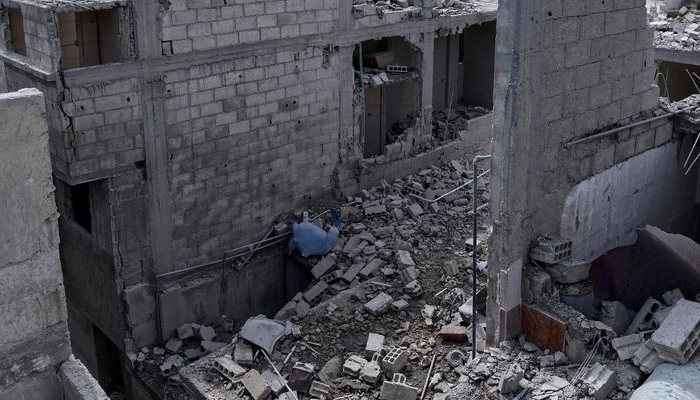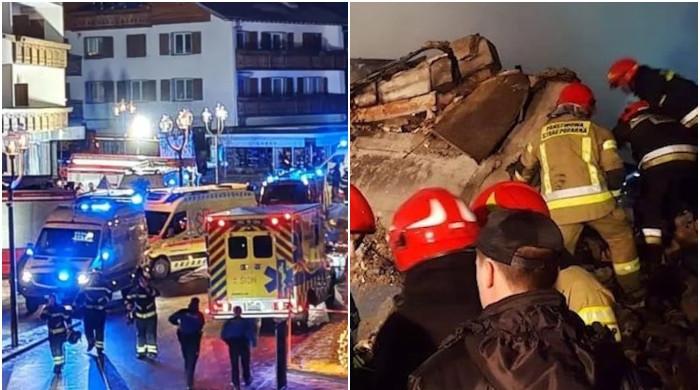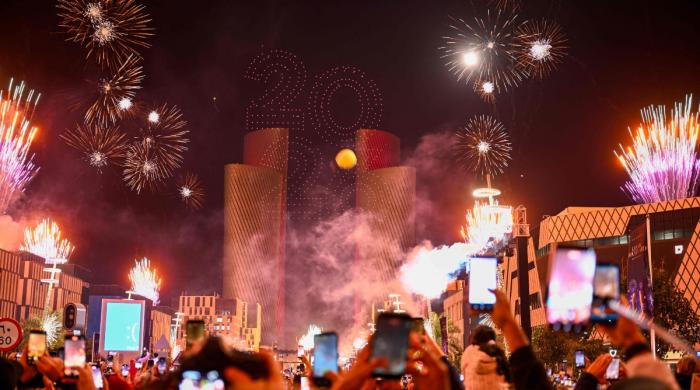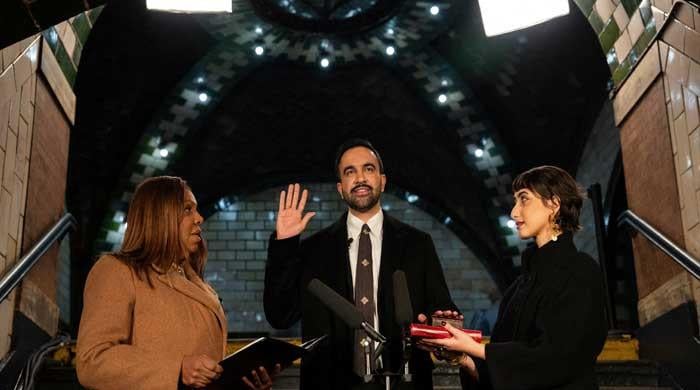Israel increasing air strikes in Syria against alleged Iranian encroachments
Israel sees Iran as a threat to its existence and has sought to blunt Iran's quest for wider regional power
April 22, 2021

Israel has expanded air strikes in Syria against alleged Iranian weapons and production centres, said Western and regional intelligence sources on Thursday.
Capitalising on a longtime alliance with Syria, Iran is moving parts of its advanced missile and arms industry into pre-existing underground compounds to develop a sophisticated arsenal within range of Israeli population centres, according to Israeli and Western intelligence sources and Syrian defectors.
Israel tolerated the entry of thousands of Iranian militia fighters from Lebanon, Iraq and Afghanistan into Syria to fight alongside President Bashar al-Assad against insurgents seeking to topple his authoritarian family rule.
The only Israeli intervention earlier in Syria's conflict consisted of sporadic air strikes to destroy arms shipments to the Iran-backed Lebanese group Hezbollah, and prevent militias setting up bases in southwest Syria, close to Israeli territory.
But with Assad having all but snuffed out the decade-long insurgency with the crucial help of Iranian and Russian forces, Israel has turned to targeting Iran's penetration into Syria's military infrastructure, three Israeli security officials and two Western officials familiar with the matter said.
Israeli army Chief of Staff Aviv Kochavi said in December that more than 500 Israeli missile strikes in 2020 alone had "slowed down Iran's entrenchment in Syria...But we still have a long way to go to reach our goals in this arena".
A dozen Syrian military and Western intelligence officials said that topping Israel's hit list has been any infrastructure that could be advancing Iran's effort to produce more precision-guided missiles that could erode Israel's regional military edge, rather than any existing Iranian-linked military asset.
Developing precision-guided missiles under cover in Syria is seen as less vulnerable to Israeli attack than ferrying them in overland or by air from Iran, these officials said.
"I don't think Israel is interested in hitting each and every target belonging to Iranian-led forces. It's not the issue. We are trying to hit targets with a strategic impact," said Brigadier General Yossi Kuperwasser, a former director general of Israeli's strategic affairs ministry and ex-head of the research wing of Israeli military intelligence.
"We want to prevent Iran turning Syria into a Iranian base close to Israel that may bring a drastic strategic change in the situation...That's why we keep pounding Iranian bases so they don't take control of the country," Kuperwasser told Reuters.
Israel sees Iran as a threat to its existence and has sought to blunt Iran's quest for wider regional power with a selective mix of military and covert actions, including what Tehran says have been sabotage attacks on its nuclear programme.
Syrian officials did not respond to Reuters' requests for comment on the assertions that Iran was using Syrian bases to create a forward arc of firepower threatening to Israel.
Asked whether this was Iran's overriding objective in Syria, two senior Iranian officials told Reuters Tehran was playing a major role in rebuilding Syria's war-shattered infrastructure, ranging from construction projects to power grids.
Pressed about the military dimensions of Iran's presence, the second Iranian official replied: "We send our workforce to Syria. It is up to Damascus to decide where they should serve."
Iran's Foreign Ministry did not respond to requests for comment. Iran has said it has military advisers in Syria to help Assad's forces, and will continue a policy "resisting" US and Israeli power in the wider Middle East.
BUNKER-BUSTER BOMBS
Over the past year, Israeli warplanes, missiles and drones have hit a far wider range of targets - from suspected Iranian guided missile research and production sites to arms storage depots - than in the previous five years, said three Israeli officials and a senior Western official based in the region.
In the latest strike on Thursday, Israel hit al Dumair on the northeastern outskirts of Damascus which it has repeatedly hit in the past and where suspected Iranian-backed militias have a strong presence.
Jane's defence news analysts said that over a three-year span Israel had used 4,239 weapons against 955 targets with 70% of Israeli pilots involved in the campaign, with the new F-35I Adir fighter jets leading dozens of missions.
"It's been...months of painful hits, not (any more) limited to the Golan Heights or southern Syria (close to Israel) or around the outskirts of Damascus, they've gone north to Aleppo and Hama and to Al Bukamal on the Iraqi border," a Syrian military defector, Brigadier General Ahmad Rahal, told Reuters.
However, some underground compounds stretch as many as 10 km (6.2 miles), making them difficult to penetrate thoroughly even for Israel's satellite-guided, 500-pound "bunker-buster" bombs, according to a senior Western intelligence source.
"There are fortifications underground that Israel cannot reach..., tunnels that maybe it knows where they begin but not where they lead to," said a Syrian military source, who said he worked for years in one of the compounds.
"You have warehouses dug into the mountains and equipped to be resistant even to bunker busters," he told Reuters.
Some of the suspected Iranian military research and development (R&D) activities have been disrupted by repeated strikes, satellite images sent to Reuters indicate.
Israeli bombs obliterated underground sections of the Imam Ali military base near the Al Bukamal crossing with Iraq in January, one of several over the last year that took out tunnels used to store trucks or move advanced weapons systems, according to two Western officials familiar with the strikes.
At least five sites in Israel's crosshairs are run by the Scientific Studies and Research Centre, part of Syria's military industrial complex, multiple Western and Israeli security and military officials and Syrian military defectors told Reuters.
Dozens of Iranian scientists and engineers from several Iranian defence ministry-associated firms are working at these R&D sites, according to relatives of two employees and a Syrian military officer involved in the project.
The US Treasury has slapped sanctions on 271 of the Centre's mainly Syrian employees, deeming the agency responsible for developing non-conventional weapons, including poison gas, and systems to deliver them to targets.
One of the military R&D sites, a mountain compound near Masyaf in western Syria, has been bombed twice by Israel in six months and is on a US sanctions blacklist for a suspected role in developing chemical weapons.
"They are modifying and upgrading precision-guided Iranian rockets and the arsenal of Hezbollah in Syria at these sites...," said Ismail Ayoub, a former Syrian air force lieutenant-colonel who defected to Jordan in 2012 and said he remains in contact with comrades in the air force.
In a sign of Iranian concern over Israel's intensifying campaign, Tehran's military chief of staff, Major General Mohammad Bagheri, visited the Safira R&D centre in Aleppo province in July soon after an Israeli air strike there, according to a Syrian army officer briefed on Bagheri's tour.









